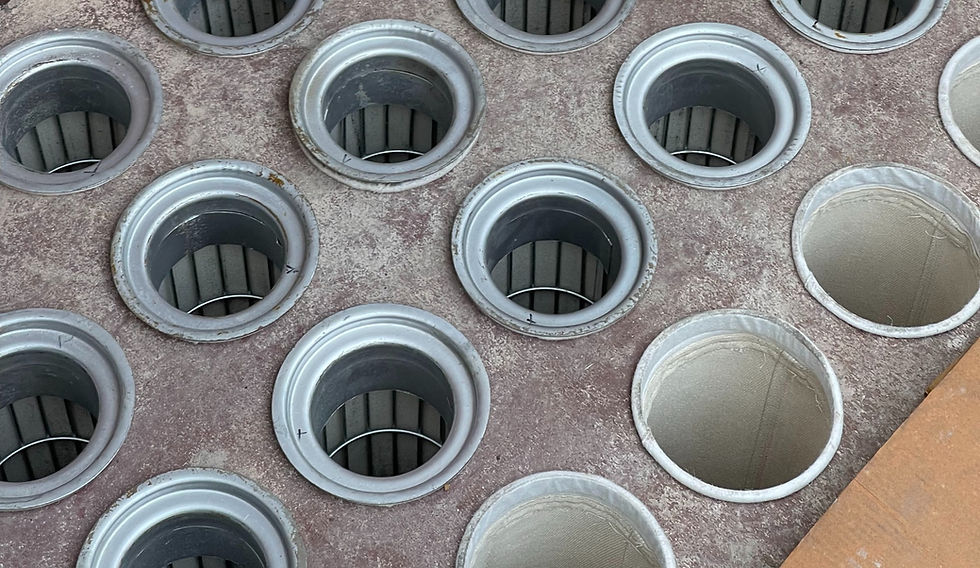Tips for a successful filter bag replacement
- Rushabh Sakhpara
- Feb 7, 2023
- 2 min read

Tip #1 - Make sure the filter bag is the correct size and type for the specific application and equipment.
Verify that the filter bag is the correct size and type for the specific application and equipment.
Properly position the filter bag in the housing, making sure it is seated properly and securely.
Check for proper seal or gasket to prevent air leakage.
It is also important to keep in mind that the installation of filter bags will vary depending on the equipment and manufacturer, so always refer to the specific instructions for your equipment.
Tip #2 - Train the crew that is going to be installing.
At the end of the day, these are the people responsible for the bulk of the work and hence they must be well-trained.
Provide detailed training on the specific equipment and filter bags that will be used. This should include information on the proper size and type of filter bags, as well as the specific installation and maintenance requirements.
Provide hands-on training and demonstration of the proper installation techniques. This should include how to properly position the filter bag in the housing, how to secure it in place, and how to check for proper seal or gasket to prevent air leakage.
Provide training on how to inspect the filter bags for any damage or wear, and how to properly maintain and replace them as needed.
Provide training on OSHA and other safety regulations that are relevant to the installation of filter bags.
Provide ongoing training and support to ensure that the labor understands the proper installation techniques and that they are able to properly maintain and replace filter bags as needed.
Provide training on how to troubleshoot and fix problems that may occur during the filter bag installation process.
Provide regular performance evaluation to ensure that the labor is installing filter bags properly.
"Training the local crew in an essential step before starting" – Maxtech specialist
Tip #3 - Clean the filter bag housing and any related equipment to remove any dust or debris.
Turn off all equipment and power to the bag house.
Open the bag house and remove any debris or loose material that may be inside.
Use a vacuum or air blower to remove any remaining dust or debris.
Inspect the interior of the bag house for any signs of damage or wear, and repair or replace any parts as necessary.
Inspect the bag house again to ensure that it is completely clean and free of debris before installing new filter bags.
Tip #4 - Follow proper commissioning procedures
There are many steps to be followed and it is easy to skip some of the more difficult ones in order to get the plant started. However, improper commissioning can lead to early failures.
Tip #5 - Optimize your cleaning settings
A filter bag's life is dependent on the cleaning settings. Too much pressure and too frequent pulsing can lead to premature failures. Hence, you need to find the right setting at which the bags get cleaned and pressure drops do not rise but it also should not be too vigorous so as to reduce the life of the filter bag.
Follow the manufacturer's instructions for installation and maintenance.
The manufacturer is the expert and the warranty provider and hence one should always keep in mind their instructions.







留言